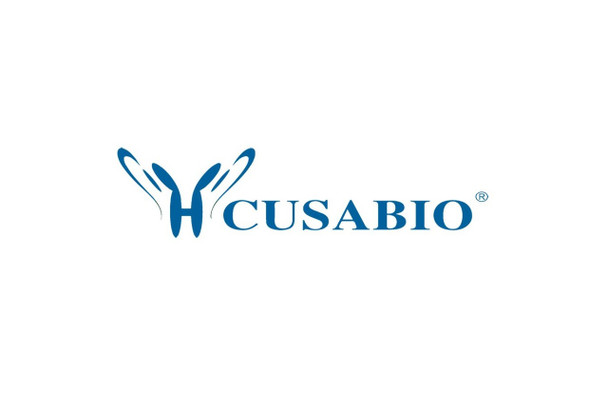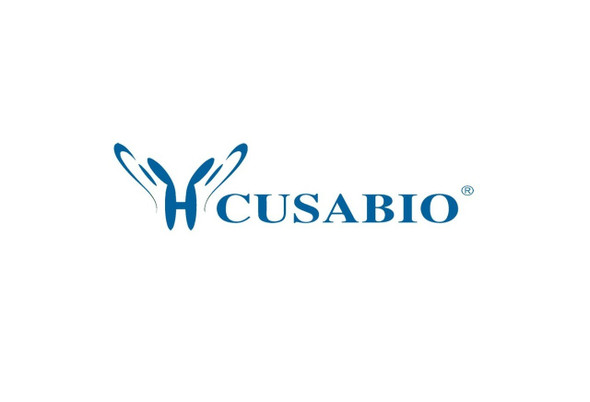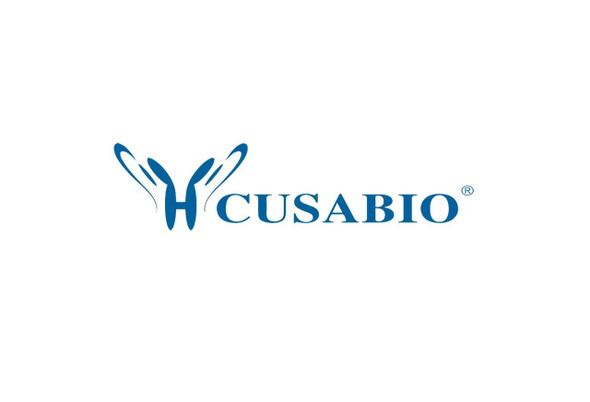Cusabio Human Recombinants
Recombinant Human Myeloid cell surface antigen CD33 (CD33), partial | CSB-EP004925HU
- SKU:
- CSB-EP004925HU
- Availability:
- 3 - 7 Working Days
Description
Recombinant Human Myeloid cell surface antigen CD33 (CD33), partial | CSB-EP004925HU | Cusabio
Alternative Name(s): Sialic acid-binding Ig-like lectin 3 Short name: Siglec-3 gp67 CD_antigen: CD33 SIGLEC3
Gene Names: CD33
Research Areas: Immunology
Organism: Homo sapiens (Human)
AA Sequence: DPNFWLQVQESVTVQEGLCVLVPCTFFHPIPYYDKNSPVHGYWFREGAIISRDSPVATNKLDQEVQEETQGRFRLLGDPSRNNCSLSIVDARRRDNGSYFFRMERGSTKYSYKSPQLSVHVTDLTHRPKILIPGTLEPGHSKNLTCSVSWACEQGTPPIFSWLSAAPTSLGPRTTHSSVLIITPRPQDHGTNLTCQVKFAGAGVTTERTIQLNVTYVPQNPTTGIFPGDGSGKQETRAGVVH
Source: E.coli
Tag Info: N-terminal 10xHis-SUMO-tagged and C-terminal Myc-tagged
Expression Region: 18-259aa
Sequence Info: Extracellular Domain
MW: 46.7 kDa
Purity: Greater than 85% as determined by SDS-PAGE.
Relevance: Putative adhesion molecule of myelomonocytic-derived cells that mediates sialic-acid dependent binding to cells. Preferentially binds to alpha-2,6-linked sialic acid. The sialic acid recognition site may be masked by cis interactions with sialic acids on the same cell surface. In the immune response, may act as an inhibitory receptor upon ligand induced tyrosine phosphorylation by recruiting cytoplasmic phosphatase(s) via their SH2 domain(s) that block signal transduction through dephosphorylation of signaling molecules. Induces apoptosis in acute myeloid leukemia
Reference: "A study of CD33 (SIGLEC-3) antigen expression and function on activated human T and NK cells: two isoforms of CD33 are generated by alternative splicing." Hernandez-Caselles T., Martinez-Esparza M., Perez-Oliva A.B., Quintanilla-Cecconi A.M., Garcia-Alonso A., Alvarez-Lopez D.M., Garcia-Penarrubia P. J. Leukoc. Biol. 79:46-58(2006)
Storage: The shelf life is related to many factors, storage state, buffer ingredients, storage temperature and the stability of the protein itself. Generally, the shelf life of liquid form is 6 months at -20?/-80?. The shelf life of lyophilized form is 12 months at -20?/-80?.
Notes: Repeated freezing and thawing is not recommended. Store working aliquots at 4? for up to one week.
Function: Putative adhesion molecule of myelomonocytic-derived cells that mediates sialic-acid dependent binding to cells. Preferentially binds to alpha-2,6-linked sialic acid. The sialic acid recognition site may be masked by cis interactions with sialic acids on the same cell surface. In the immune response, may act as an inhibitory receptor upon ligand induced tyrosine phosphorylation by recruiting cytoplasmic phosphatase(s) via their SH2 domain(s) that block signal transduction through dephosphorylation of signaling molecules. Induces apoptosis in acute myeloid leukemia (in vitro).
Involvement in disease:
Subcellular Location: Cell membrane, Single-pass type I membrane protein
Protein Families: Immunoglobulin superfamily, SIGLEC (sialic acid binding Ig-like lectin) family
Tissue Specificity: Monocytic/myeloid lineage cells.
Paythway: Hematopoieticcelllineage
Form: Liquid or Lyophilized powder
Buffer: If the delivery form is liquid, the default storage buffer is Tris/PBS-based buffer, 5%-50% glycerol. If the delivery form is lyophilized powder, the buffer before lyophilization is Tris/PBS-based buffer, 6% Trehalose, pH 8.0.
Reconstitution: We recommend that this vial be briefly centrifuged prior to opening to bring the contents to the bottom. Please reconstitute protein in deionized sterile water to a concentration of 0.1-1.0 mg/mL.We recommend to add 5-50% of glycerol (final concentration) and aliquot for long-term storage at -20?/-80?. Our default final concentration of glycerol is 50%. Customers could use it as reference.
Uniprot ID: P20138
HGNC Database Link: HGNC
UniGene Database Link: UniGene
KEGG Database Link: KEGG
STRING Database Link: STRING
OMIM Database Link: OMIM









